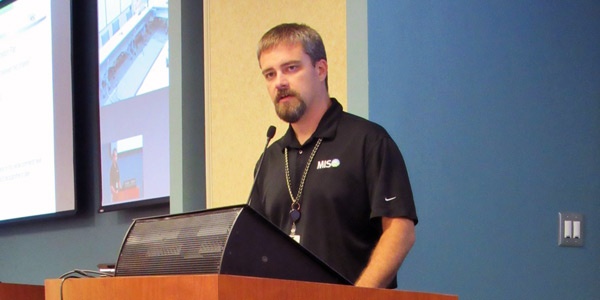By Amanda Durish Cook
CARMEL, Ind. — MISO will file a revised set of interconnection queue changes with FERC on Oct. 21, and this time it says it has “overwhelming” stakeholder support for the changes.
In its second attempt at a queue reform filing, MISO proposed that the revised M2 milestone become a flat charge of $4,000/MW of new capacity instead of the earlier $5,000/MW. The M3 and M4 fees would total 10% and 20% of any upgrade costs, respectively. MISO would settle any over- or underpayment after it completed a final facility study. (See “MISO Tries to Please FERC with Second Attempt at Queue Reform,” MISO Planning Advisory Committee Briefs.)
All but seven of the 27 members that provided feedback this month supported the three milestone payments. Nearly all members supported total milestone payments being applied to the generator interconnection agreement’s initial payment.
The majority agreed that a project should be able to withdraw penalty-free if a facility study shows costs 25% or $10,000/MW more than the system impact study’s projection. Stakeholders were about evenly split, however, on whether MISO should allow interconnection customers to decrease the number of megawatts they signed up for by 10% at the second decision point of the queue, where projects that withdraw before the first 220 days of the queue can be refunded their entire M3 payment. MISO is proposing 10% megawatt decrease options at both decision point two and the approximately 140-day decision point one, where withdrawing projects are credited their entire M2 milestone payment.
Of the 27 members who responded to MISO, 20 said they generally supported the revised queue reform proposal, five said they did not and two abstained from offering an opinion.
FERC rejected MISO’s first proposal in March, saying the RTO failed to consider other factors when it blamed the queue bottleneck on “speculative” projects. The commission also said MISO’s proposed milestone payments created a “barrier to entry” (ER16-675).
At last week’s Planning Advisory Committee meeting, MISO Director of Interconnection and Planning Tim Aliff said the RTO is responding to FERC’s order by adding more requirements for itself and its transmission owners to lessen the burden on the interconnection customer.
At this month’s MISO Board of Directors meeting in St. Paul, Minn., MISO Vice President of System Planning and Seams Coordination Jennifer Curran said the RTO is hoping to build more certainty into the process and reduce restudies and the amount of time it takes for projects to clear the queue. “It’s currently a two- to three-year process and is challenged by restudies,” she said. “We think we’ve struck a nice balance between all of the interested parties here.”
If approved by FERC, queue changes will take effect in January. Although the new queue rules have not been approved, MISO has nevertheless moved ahead with the transition, which will be fully completed after February 2017’s batch of interconnection entrants.





